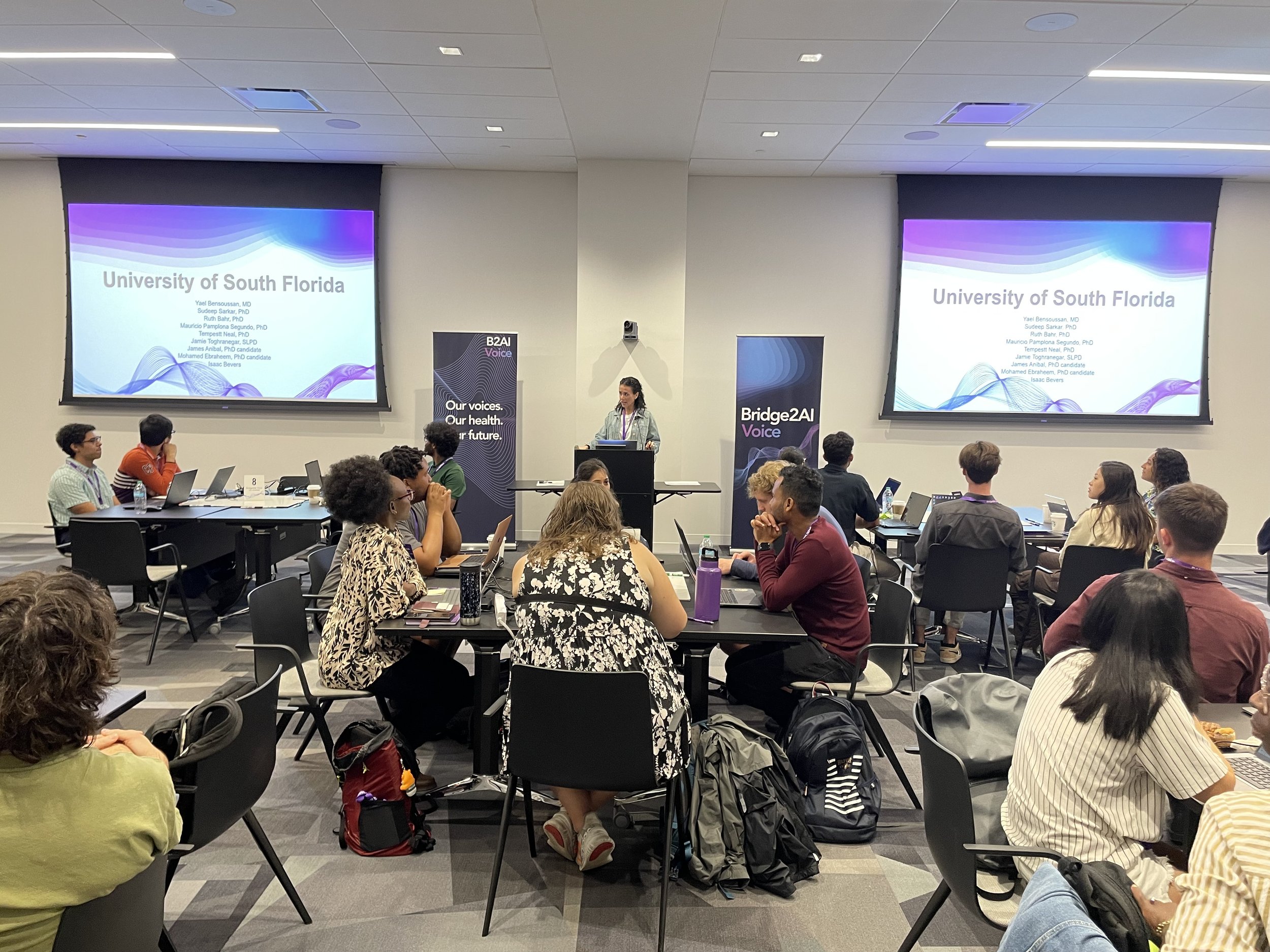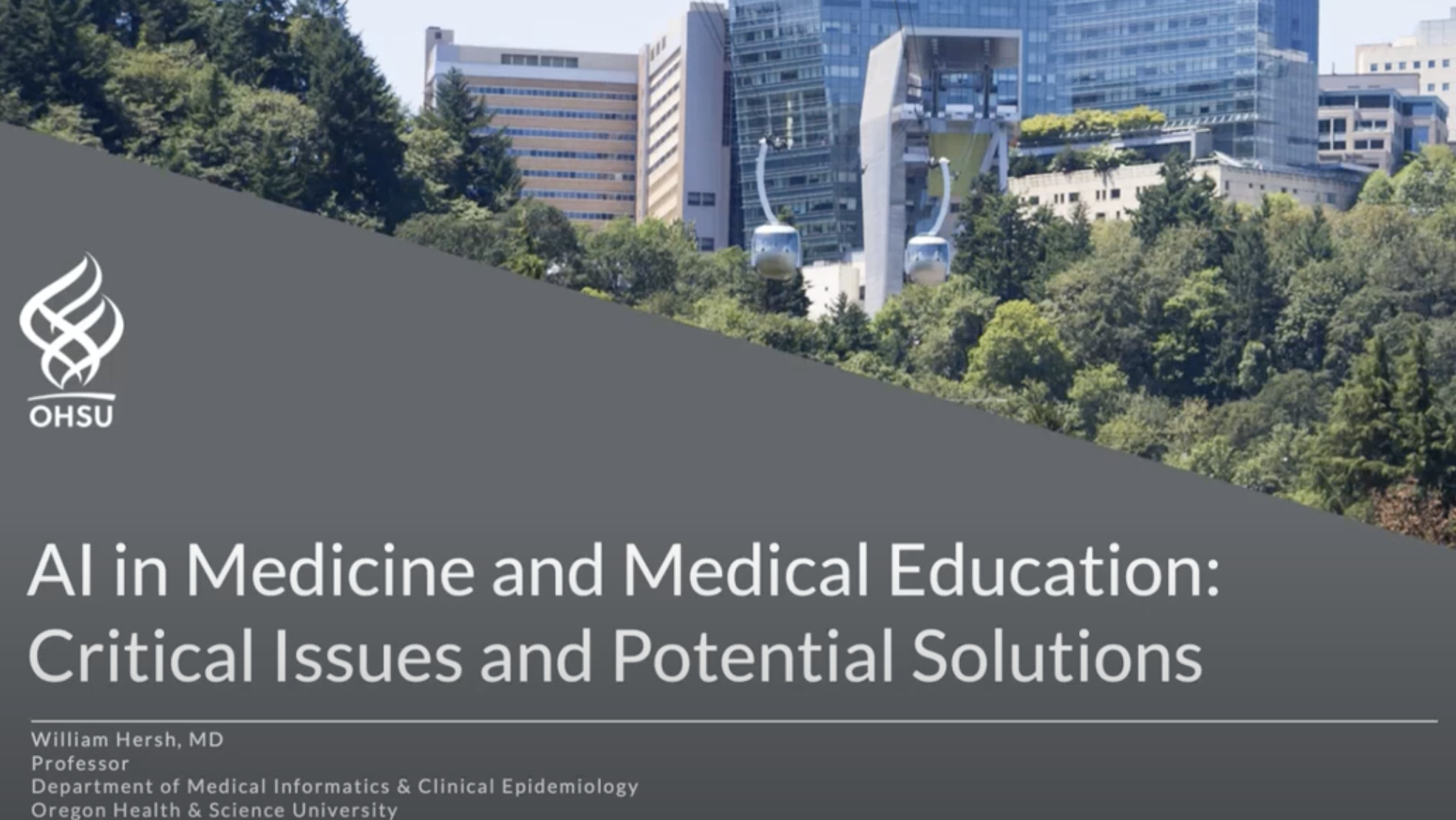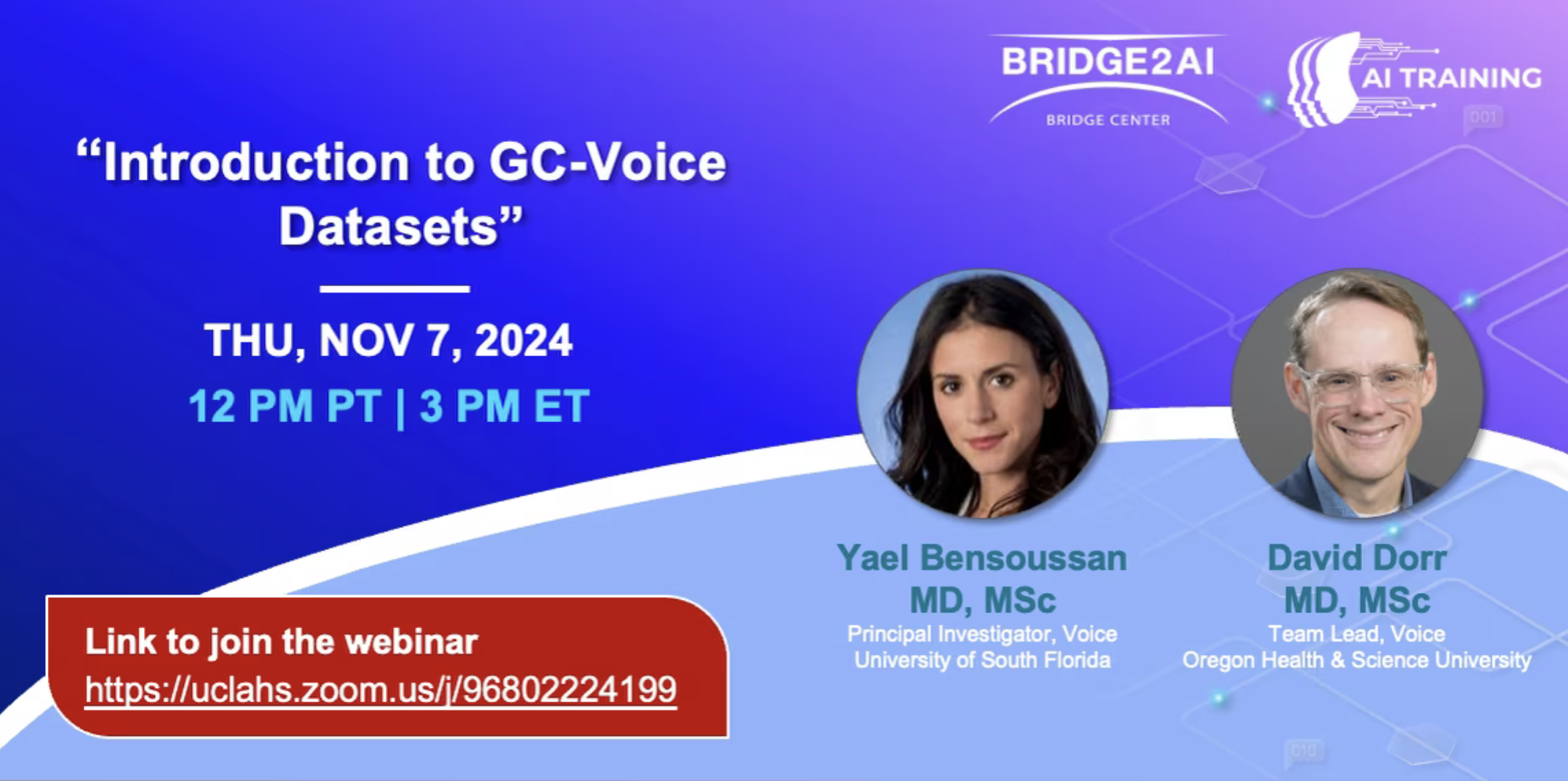
Learn about ethical development and use of voice AI in healthcare
Educational Resources
Learn from experts within our consortium
Training, Recruitment, and Mentoring Learning Resources
We are pleased to introduce the Bridge2AI Consortium's Training, Recruitment, and Mentoring Learning Resource, accessible to the public by clicking the button below. This resource is tailored for aspiring AI and biomedicine investigators, offering foundational knowledge and essential tools to help you embark on your journey in this transformative field. Explore the Bridge2AI Grand Challenges and discover areas of interest, guided by expert insights and educational content. This resource is designed to support your growth and development as you pursue a career at the intersection of AI and biomedicine.
Dr. Philip Payne & Andrea Krussel, MA
Washington University in St. Louis
Dr. William Hersh
Oregon Health & Science University
Dr. Maria Powell
Washington University in St. Louis
Dr. Steven Bedrick
Oregon Health & Science University
Dr. Thomas Kannampallil
Washington University in St. Louis
Dr. Yael Bensoussan and Dr. David Dorr
University of South Florida and Oregon Health & Science University
James Anibal, DPhil candidate
University of Oxford
Dr. David Dorr
Oregon Health & Science University
B2AI Voice Glossary
Data:
| Term | Definition |
|---|---|
| AI/ML | Artificial Intelligence/Machine Learning |
| Algorithm | A set of rules or instructions designed to solve a problem or accomplish a task, especially by a computer. |
| Analytics | The systematic computational analysis of data or statistics. It is used for the discovery, interpretation, and communication of meaningful patterns in data. |
| API | Application Programming Interface – A set of functions that allow applications to access data and interact with external software components, operating systems, or microservices. |
| Big Data | Extremely large datasets that may be analyzed computationally to reveal patterns, trends, and associations, especially relating to human behavior and interactions. |
| Business Intelligence (BI) | The strategies and technologies used by enterprises for data analysis of business information. BI technologies provide historical, current, and predictive views of business operations. |
| Cloud Computing | The delivery of different services through the Internet, including data storage, servers, databases, networking, and software. |
| Data Mining | The process of discovering patterns in large data sets involving methods at the intersection of machine learning, statistics, and database systems. |
| Data Science | A multi-disciplinary field that uses scientific methods, processes, algorithms, and systems to extract knowledge and insights from structured and unstructured data. |
| Data Visualization | The graphical representation of information and data. By using visual elements like charts, graphs, and maps, data visualization tools provide an accessible way to see and understand trends, outliers, and patterns in data. |
| Deep Learning | A subset of machine learning in artificial intelligence that has networks capable of learning from data that is unstructured or unlabeled. Also known as a deep neural network. |
| Machine Learning | A subset of artificial intelligence that involves the study of computer algorithms that can improve automatically through experience and by the use of data. |
| Neural Network | A series of algorithms that attempt to recognize underlying relationships in a set of data through a process that mimics the way the human brain operates. |
| Predictive Analytics | A branch of advanced analytics used to make predictions about unknown future events. It uses many techniques from data mining, statistics, modeling, machine learning, and artificial intelligence to analyze current data to make predictions about future. |
| Structured Data | Any data that resides in a fixed field within a record or file, such as data contained in relational databases and spreadsheets. |
| Unstructured Data | Information that either does not have a pre-defined data model or is not organized in a pre-defined manner. It typically includes text-heavy data but may also contain data such as dates, numbers, and facts. |
| Visualization | The representation of an object, situation, or set of information as a chart or other image. It is used to simplify complex data relationships and provide insights that can lead to better decision-making. |
Ethics:
| Term | Definition |
|---|---|
| Accountability | The obligation of individuals or organizations to take responsibility for their actions, including the ethical implications of their decisions, particularly in the context of data usage and AI systems. |
| Bias | A systematic error or prejudice in data, models, or AI systems that leads to unfair outcomes, often affecting specific groups unfairly based on factors such as race, gender, or socioeconomic status. |
| Consent | Informed and voluntary agreement by individuals to allow their data to be collected, used, or shared, with a clear understanding of the purposes and implications of such actions. |
| Data Privacy | The right of individuals to control how their personal information is collected, stored, and used, ensuring that sensitive data is protected from unauthorized access or misuse. |
| Data Security | Protecting data from unauthorized access, corruption, or theft through technological safeguards, ensuring that sensitive information remains confidential and secure. |
| Discrimination | Unfair treatment of individuals or groups based on characteristics such as race, gender, or age, which can be exacerbated by biased data or algorithms in AI systems. |
| Ethical AI | Designing and implementing AI systems in a manner that prioritizes fairness, accountability, transparency, and the well-being of individuals, while minimizing harm and ensuring that AI serves the public good. |
| Fairness | The principle that data and AI systems should not create or perpetuate discrimination, bias, or inequality, and should treat all individuals equitably. |
| Informed Consent | A process through which individuals are fully informed about the potential risks, benefits, and uses of their data or participation in AI systems, allowing them to make educated decisions regarding their involvement. |
| Transparency | Ensuring that the processes, data, and decisions made by AI systems are open, understandable, and explainable to stakeholders, including users, regulators, and the public. |
| Trust | The confidence individuals have in AI systems and the organizations deploying them, based on the reliability, security, fairness, and transparency of the systems. |
| Unbiased AI | AI systems that are designed to minimize or eliminate biases in decision-making, ensuring that outcomes are fair and not disproportionately affecting certain groups or individuals. |
Voice:
| Term | Definition |
|---|---|
| Amplitude | Amplitude refers to the magnitude or strength of a sound wave, typically measured in decibels (dB). In voice production, amplitude is perceived as loudness. |
| Articulation | The movement of the speech organs (tongue, lips, palate, etc.) to produce sounds, which combine to form speech. Clear articulation results in understandable speech. |
| Frequency | Frequency refers to the number of vibrations of the vocal folds per second, measured in hertz (Hz). In voice, frequency is perceived as pitch. |
| Formant | A concentration of acoustic energy around a particular frequency in the speech wave. Formants are crucial in distinguishing different vowel sounds. |
| Pitch | Pitch is the perceptual counterpart of frequency. It refers to the highness or lowness of the voice, determined by the frequency of the vocal fold vibrations. |
| Phonation | The process by which the vocal folds produce sound through their vibration, which is then modified by the vocal tract to create speech sounds. |
| Resonance | Resonance refers to the selective amplification and filtering of specific frequencies in the vocal tract, contributing to the richness and quality of the voice. |
| Hoarseness | A condition where the voice sounds breathy, strained, or raspy. Hoarseness is often caused by irritation or damage to the vocal cords. |
| Hypernasality | A speech condition where there is too much nasal resonance during speech, often due to velopharyngeal dysfunction. |
| Microphone | A device that converts acoustic sound waves into electrical signals, often used to capture voice for recording or amplification. |
| Headroom | The difference between the maximum signal level and the level at which distortion begins, important in audio recording and processing to prevent clipping. |








